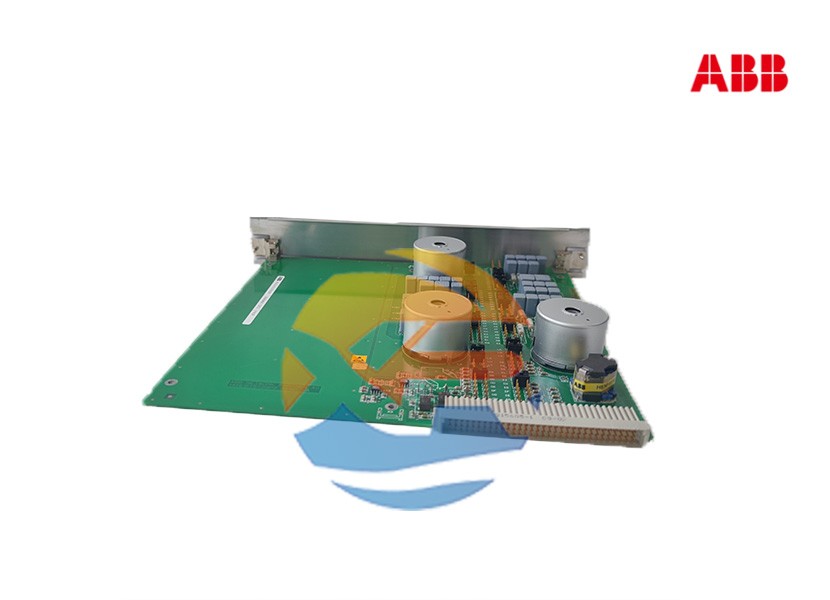In industrial automation, the ability to reliably sense the state of a machine—is a part in place? Is a guard closed?—is the foundation of all automated sequences. The ABB P4LR 1KHL015107R0001 digital input module is a workhorse component designed precisely for this task. This article moves beyond technical specs to explore the practical applications of this module, demonstrating how it serves as a fundamental building block in automated packaging, material handling, and assembly systems.
The "Eyes" of the Machine
A PLC CPU is powerful, but it is blind and deaf to the physical world without I/O modules. Digital input modules like the P4LR act as the nervous system, feeding critical status information to the brain (the CPU). The reliability of this information directly impacts the safety, efficiency, and precision of the entire automated process.

Key Application Areas for the P4LR 1KHL015107R0001 Module
1. Packaging Machinery
Modern packaging lines operate at high speeds and require precise coordination.
- Scenario: A cartoning machine needs to know when a product is in place before closing the box.
- Application: A photoelectric sensor is positioned to detect the product. When the beam is broken, the sensor's output activates, sending 24V DC to a channel on the P4LR module. The PLC reads this input and executes the next step in the sequence: activating a solenoid to fold the carton flaps.
- Benefit: The module's fast response time and noise immunity ensure that the high-speed process is not interrupted by false signals, maximizing line efficiency.
2. Material Handling and Conveyor Systems
These systems move goods through a facility and require constant feedback on package location.
- Scenario: A conveyor line needs to sort packages to different lanes based on a barcode scan.
- Application: A photo-eye sensor at the divert point confirms a package is present. This sensor is wired to the P4LR module. The PLC sees this "package present" signal, which triggers the barcode scanner. After a successful scan, the PLC activates the appropriate diverter arm.
- Benefit: The module's ability to handle multiple discrete inputs allows one module to monitor several sensors along a conveyor (e.g., end-of-line sensors, jam detection sensors).
3. Automated Assembly Lines
Robotic cells and assembly stations depend on numerous safety and position checks.
- Scenario: A robotic welding cell must ensure operator safety.
- Application: Safety gates equipped with limit switches are wired to the digital inputs. The P4LR module reads the status of these switches. The control logic is programmed so that the robot cannot operate unless all safety gate inputs are TRUE (closed). The status LEDs on the module provide instant visual confirmation for technicians.
- Benefit: The robust design and reliable isolation of the module ensure that safety signals are read correctly, which is non-negotiable for personnel protection.
4. Industrial Pumps and Motors
Even simpler applications require basic control and monitoring.
- Scenario: Monitoring the status of a large pump.
- Application: A flow switch or a pressure switch can be connected to a digital input. If the flow stops or the pressure drops, the switch changes state, and the P4LR module signals the PLC, which can then trigger an alarm or start a backup pump.
- Benefit: Provides essential feedback for predictive maintenance and system protection, preventing damage to equipment.
The Tangible Benefits of a Reliable Digital Input Module
Using a quality module like the P4LR 1KHL015107R0001 delivers clear operational advantages:
- Increased Machine Uptime: Reduced false trips from electrical noise mean less production interruption.
- Enhanced Troubleshooting Speed: The per-channel LED indicators allow technicians to quickly identify if a problem is in the field device (sensor not active) or in the controller (no input signal seen by CPU).
- System Scalability: The modular nature of the AC 500 PLC system means you can start with one 8-channel P4LR module and easily add more as the machine's requirements grow.
- Simplified Maintenance: Standardized, readily available modules make stocking spares and performing replacements straightforward.
Conclusion
The application of the ABB P4LR 1KHL015107R0001 digital input module is a testament to the principle that robust automation is built on reliable foundations. Its role in reading sensor and switch states may seem simple, but it is this fundamental data that drives the complex logic of modern industrial machines. By ensuring accurate and noise-immune signal acquisition, this module is a key contributor to the efficiency, safety, and reliability of countless automated systems worldwide.
